So what can you do besides change your dog’s diet to help your dog lose weight? Just like with humans, exercise can help. Here are five fun and easy ways to exercise with your dog! These can be tailored and adjusted depending on your dog’s fitness level.
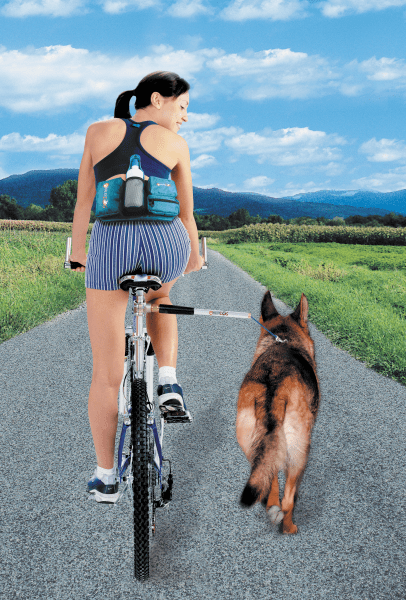
Photo: Getty Images
Biking
If you can ride a bike and have a proper bike side attachment (Like the BICE WalkyDog,) securely connected to a harness, you can bicycle with nearly any dog. You can bicycle slowly, at a moderate pace or even enjoy short bursts of speed safely with your dog.
This is a cool-weather activity, so think autumn and winter. Remember that dogs don’t sweat like humans. They only have two sets of sweat glands, plus their thermoregulation is affected in temperatures over 60 degrees Fahrenheit doing cardiovascular exercises, much like bicycling.
When starting out bicycling with your dog, keep the distance short, 1 to 3 miles, until you and your teammate work up (slowly) to 100 accumulated miles, then you can increase the amount of distance you do together. Always have water for your dog, take breaks, have fun. Dirt and grass trails are preferred, extended duration on pavement is not. In a short time, you and your dog could either be enjoying a nice day out biking and stopping at fun places or do a quick 3 miles in 30 minutes.
Things to note: Biking with puppies under 9 months of age is not advised at all. For young dogs, do only short and slow outings until they are over 18 months of age. Also, go only as fast as the slowest dog, including overweight and elderly dogs. They can still come bicycling with us, just with plenty of breaks at a slow pace, while doing short distances. Ensure that the return trip home is as fun as heading out on a bicycle adventure.
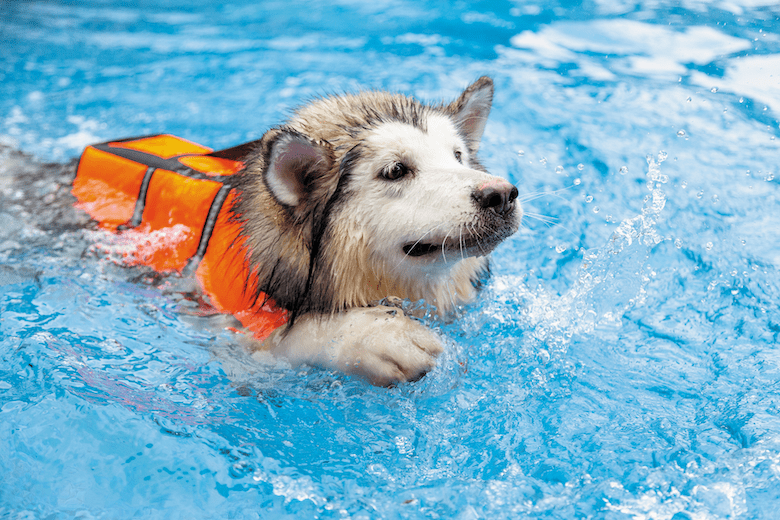
Photo: Getty Images
Swimming
Swimming is great for all dogs, as it is low-impact, full-body exercise. Dogs will need a personal flotation device depending on their age (very young or old), the environment in which they are swimming (where it is deep or has a current) or exposed to water for extended durations (where they will get tired, like a day on the water with family). Swimming can be done in any safe body of water that is clean, like swimming pools, rivers, bays, lakes and calm ocean waters. There are also water treadmills at canine hydrotherapy businesses that have exercise programs for dogs.
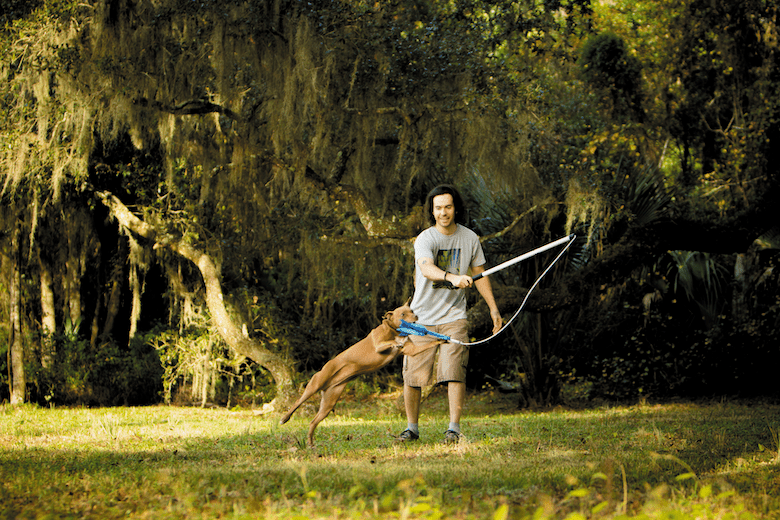
Photo: Getty Images
Flirt Pole
I love flirt poles. They are 6-foot long flexible poles with a 4-foot line going out to a lure or flag on the end. (Like Squishy Face Studio‘s Flirt Pole V2.) The idea is to move the lure at the end of the line around on the ground and have your dog engage with it — chasing and eventually capturing it. With younger dogs, older dogs and overweight dogs, make bigger loops with the line instead of short cuts and fast moves.
There is a quick learning curve to using this. Practice alone at first to keep the lure on the ground — spin around in a circle a couple of times first to get the hang of using one. Have something with you to trade up with your dog for when he does catch the lure. When he releases the lure, mark that with “drop it“ and then reward (which can be the continuance of play). A flirt pole is not a tug toy, so make sure the dog drops the lure before rewarding.
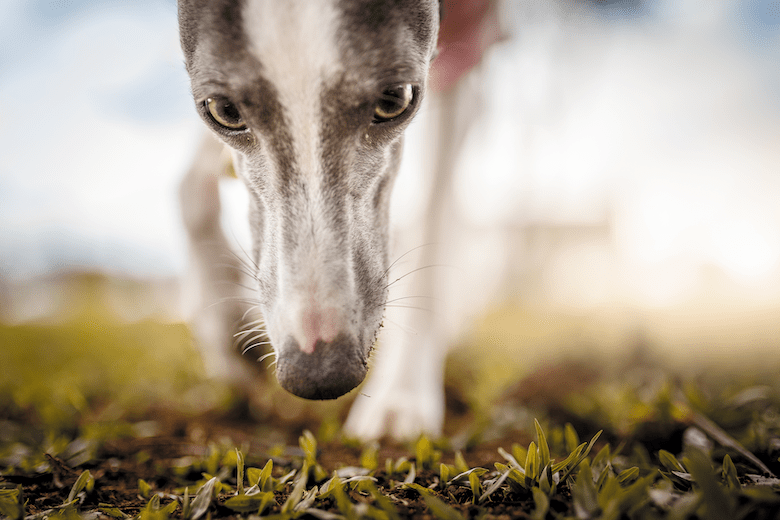
Photo: Getty Images
Sniffaris
Sniffaris are walks where your dog picks where to go — only, of course, if the environment and direction he chooses are safe. Like the name suggests, the idea is to stop and smell everything and anything that is safe to engage with. When I’m not walking with dogs from point A to point B, I’m allowing them to engage with safe things to smell. During sniffaris, I time them. After 30 or 45 minutes, I’ll start guiding us back toward our starting point. Most people are amazed at how a Sniffari will tire out their dogs. Being allowed to gather scent is a great thalamus workout (that’s the part of the brain that relays sensory information).
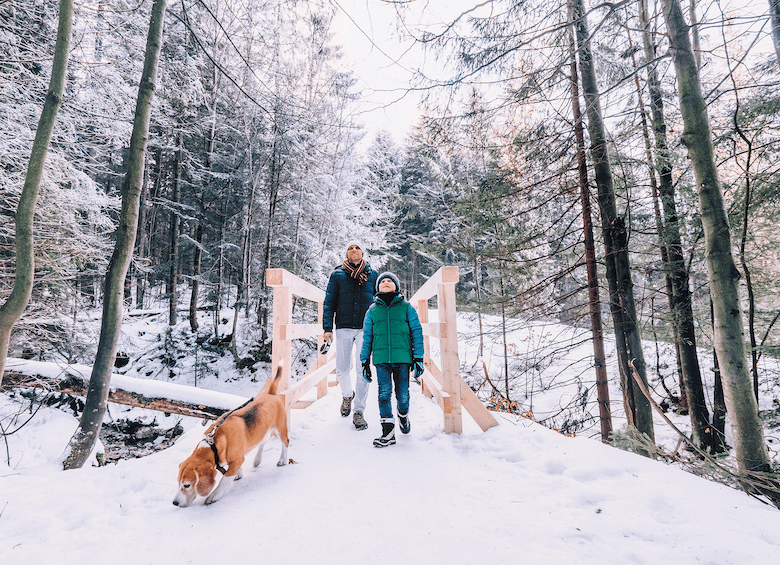
Photo: Getty Images
Mini Hikes
Mini-hikes are basically 3- to 5-plus mile walks. Instead of walking around your neighborhood, go somewhere special with a great trail, like a local county or state park, river or beach to experience waldeinsamkeit (the feeling of being one with nature), but with the added bonus of being with your dog(s).
For our dogs, exercise is vital, as is the experience shared with us. Exercise doesn’t need to be cardiovascular. Exercise can also incorporate enrichment-based mental stimulation into this important time spent with our dogs. Remember: If we engage the brain, we tire the body.